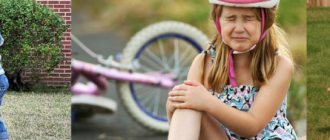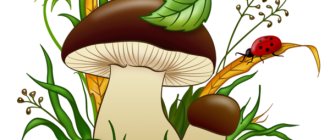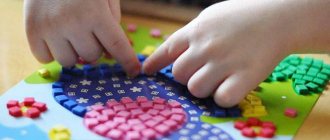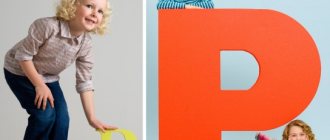Methodological material - Articulation exercises
Methodological material “Articulation exercises”
Compiled by: Kukhmistrova Galina Mikhailovna teacher - speech therapist of the Petropavlovsk special (correctional) secondary school
– boarding school of the VIII type” E-mail to contact the author:
Articulatory gymnastics is a field for the flight of imagination and the development of teacher creativity. After all, it is intended not only to prepare the organs of articulation for producing and pronouncing sounds, but also to develop students’ imagination, attention, volition, and perseverance.
In order to inform parents about the forms and methods of preparing children’s articulation organs for correct pronunciation, I organize a master class on the topic: “Difficulties of difficult sounds”, a meeting of the family club “Zvukoznaykin’s Lessons”, as well as a monthly “Toy Library for Caring Parents”, open classes with students, designing folders, photo presentations.
The variability of the forms of articulatory gymnastics in individual subgroup classes, in joint activities of the teacher with children, and in speech therapy warm-ups helps: • to form the kinetic-kinesthetic basis of movements, • to develop articulatory motor skills to the level of minimal sufficiency for making sounds, • to cultivate the child’s self-confidence and their capabilities, encourage activity, independence, initiative • maintain the child’s interest in the labor-intensive process of mastering correct pronunciation, the need for speech therapy classes.
Regular performance of articulatory gymnastics will help: - improve blood supply to the articulatory organs and their innervation (nerve conduction); — improve the mobility of articulatory organs; — strengthen the muscular system of the tongue, lips, cheeks; — teach the child to maintain a certain articulatory position; — increase the range of movements; - reduce spasticity (tension) of articulatory organs; - prepare the child for the correct pronunciation of sounds.
Full development of the child’s personality
impossible without teaching him correct speech. This is often very difficult and time-consuming work for a child. Many years of experience show that the sooner parents pay attention to the child’s correct sound pronunciation, the faster it is formed. It is a mistake to hope that pronunciation deficiencies will spontaneously disappear as the child grows, since they can become firmly entrenched and turn into a permanent disorder. Any speech deficiencies limit the child’s communication with peers and adults and negatively affect the formation of the emotional sphere.
I open my mouth wide and press my tongue to the roof of my mouth. The tongue jumps down and a click is heard.
Purpose: To practice raising the tongue, prepare it for vibration, and stretch the sublingual ligament (frenulum). Strengthen the muscles of the tongue. Description: Smile, open your mouth and click the tip of your tongue (“the horse clicks its hooves”). Note! 1. The exercise is first performed at a slow pace, and then the pace speeds up (“the horse galloped faster”). 2. The lower jaw does not move, only the tongue works.
I’ll open my mouth wide, as if I’m about to click. I'll suck my tongue onto the roof of my mouth, jaw down - and all my studies.
Goal: To practice the ability to hold the tongue at the top in the position necessary for the sound [r]. Strengthen the muscles of the tongue, stretch the hypoglossal ligament (frenulum). Description: Smile, open your mouth wide, suck your tongue to the roof of your mouth so that the hyoid ligament is stretched (“mushroom stalk”). Hold in this position for 5-10 seconds. Note! 1. If there are difficulties in performing this exercise, then you need to return to the “Horse” exercise. Click your tongue, gradually slowing down the pace (“the horse is walking slowly”) and suck your tongue to the roof of your mouth.
I smile, my mouth is open: The tongue is already there. The edges are raised towards the teeth - Here is my “cup”.
Goal: Learn to hold the tongue in a cup shape at the top, near the upper teeth. Strengthen the muscles of the tongue. Description: Smile, open your mouth and place your tongue at the top in the shape of a cup. Note! 1. If the “cup” does not work, then you need to return to the exercise “Slap your lips on your tongue”, spread your tongue on the lower lip and lightly press on the middle of the tongue. In this case, the edges of the tongue rise upward, and the tongue takes the desired shape. 2. You can also spread your tongue by patting it with your lips, and roll it over your upper lip, holding the edges with your fingers. 3. When performing the exercise, the edges of the tongue are at the upper teeth.
It’s like there’s jam on my lip - I’ll lick it with a “cup” into my mouth.
Goal: Practice moving the wide front part of the tongue upward in the shape of a cup. Strengthen the muscles of the tongue. Description: Smile, open your mouth and lick your lip with your tongue in a cup shape, making movements from top to bottom. You can continue the movement and remove your tongue into your mouth without destroying the “cup.” Note! 1. You need to make sure that only the tongue works, and the lower jaw does not “pull” the tongue up - it must be motionless (you can hold it with your finger). 2. The tongue is wide, cup-shaped. 3. If the exercise does not work out, then you need to return to the exercise “Slap your lips on your tongue.” Flatten your tongue, and then roll it over your upper lip, holding the edges with your fingers (with a bandage).
The tip moves left and right, as if it can’t find any room.
Goal: Strengthen the muscles of the tongue, practice its mobility. Description: Smile, open your mouth slightly, stick out your tongue as far as possible and make smooth movements from one corner of your mouth to the other. Do the exercise 10-15 times. Note! 1. Only the tongue moves - the lower jaw is motionless. 2. The tongue does not lick the lower lip, but moves, without touching it, from one corner of the mouth to the other.
I stick out my tongue so that I don’t get used to being lazy. And from tip to root I bite more and more quickly.
Goal: To achieve relaxation of the tongue muscles, increase blood supply to the tongue muscles, improve innervation (nerve conduction). Description: Smile, open your mouth slightly and bite your tongue. Options: 1. Cover the tip of the tongue. 2. Bite the middle of the tongue. 3. Bite your tongue, moving it gradually back and forth. While performing the exercise, say: “ta-ta-ta.” Pronunciation of syllables (“ta-ta-ta”) helps in performing the exercise. Note! 1. Do not tuck your lower lip inward, over your lower teeth. 2. The tongue is wide, the lips are stretched in a smile. This exercise is basic in articulation gymnastics. By performing this exercise, self-massage of the tongue is carried out.







